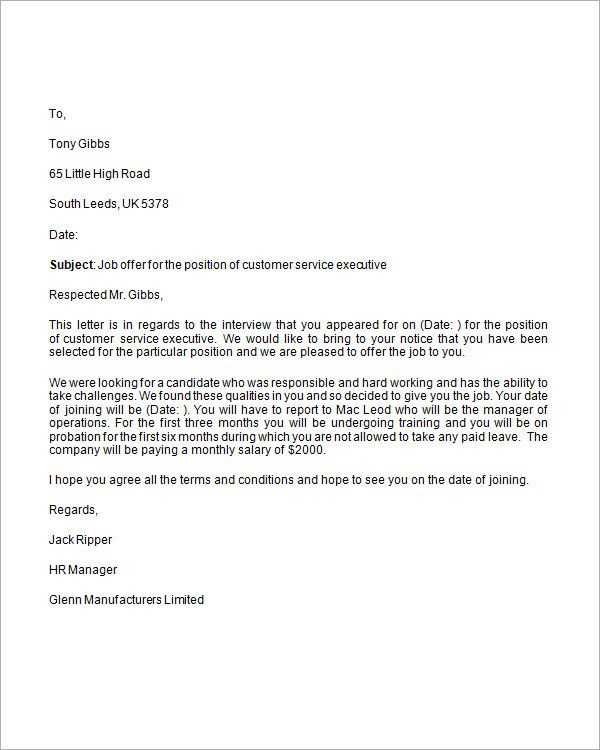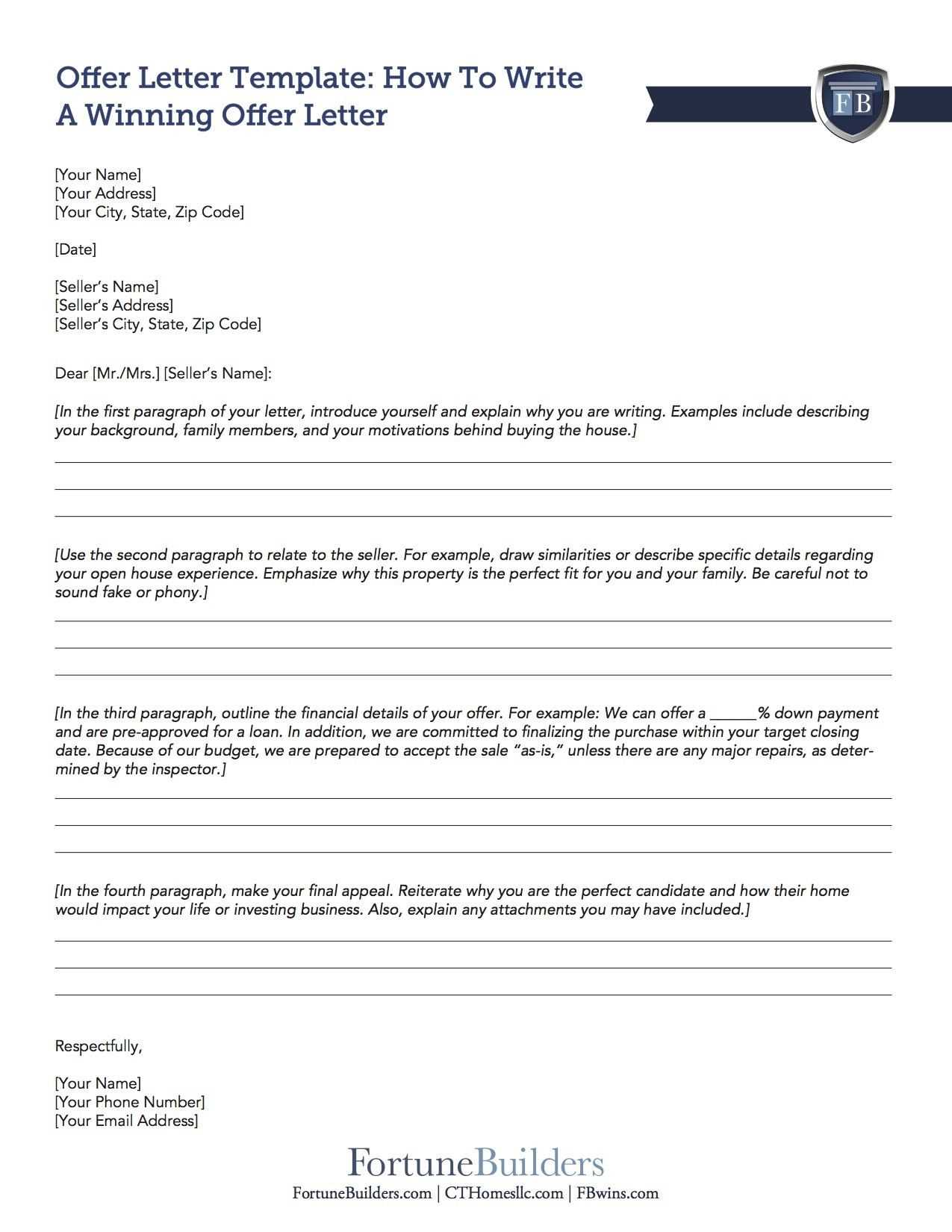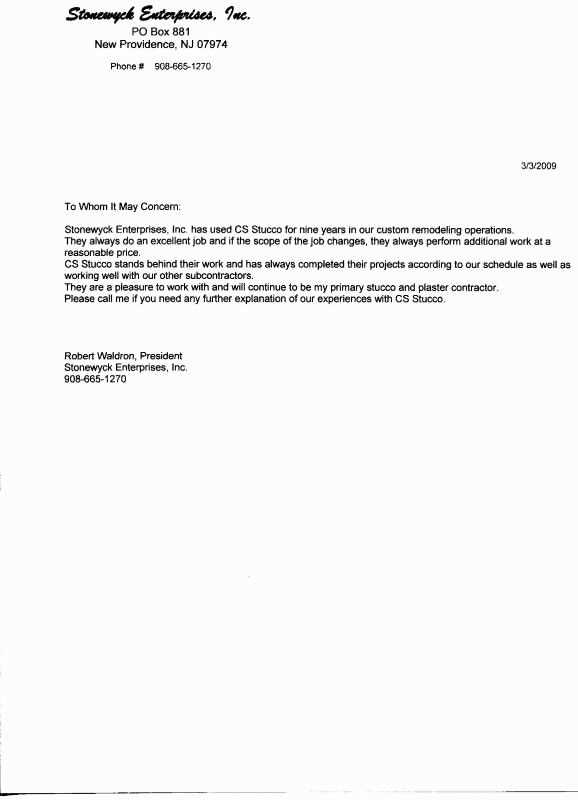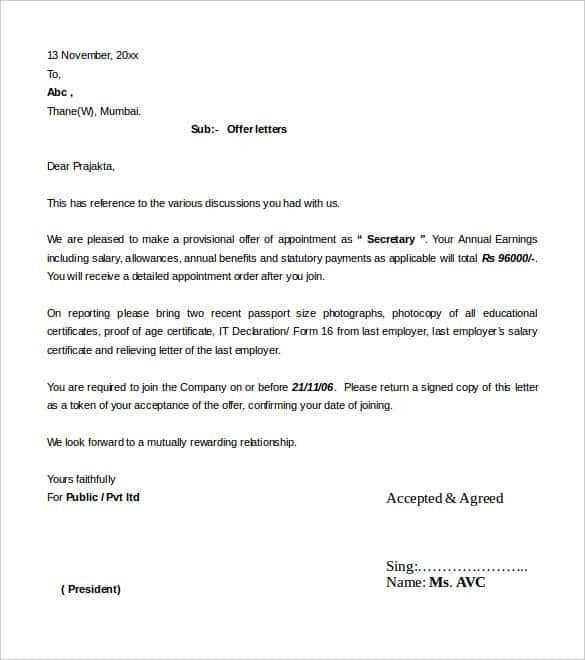Contractor Offer Letter Template for Effective Hiring

When hiring an external professional, it’s essential to set clear terms and expectations from the start. A well-written document outlining the details of the engagement helps both parties understand their responsibilities and the scope of work. This is crucial to establishing a productive relationship built on mutual understanding.
Creating a comprehensive agreement is not only about legal protection but also about ensuring that the project or tasks are executed smoothly. The right structure for such an agreement will cover critical details such as compensation, timelines, and other expectations without ambiguity. By addressing these points up front, both employer and worker can avoid misunderstandings down the line.
Effective communication is key in these documents. The way you phrase each section can make a significant impact on the clarity of your terms. It’s important to clearly define the parameters of the role and any other relevant information to ensure that the hired individual is fully informed of what is expected. This approach fosters a professional environment that encourages productivity and trust.
Creating a Professional Agreement

When formalizing a working relationship with an external professional, it’s important to provide clear and concise documentation outlining all terms and conditions. A well-structured document serves as a foundational tool to prevent any potential confusion or disputes throughout the collaboration. By carefully drafting this communication, you create a transparent understanding between the parties involved.
Key Components to Include
- Scope of Work: Clearly define the tasks, responsibilities, and deliverables expected from the individual.
- Compensation: Specify the payment structure, rates, and terms for completing the job.
- Timeframes: Set deadlines or project milestones to ensure expectations are managed effectively.
- Confidentiality: Address any confidentiality agreements or clauses that may be necessary for the work.
- Termination Terms: Outline the conditions under which the arrangement can be terminated, either by either party.
Ensuring Clarity and Professionalism
To maintain a professional tone, avoid any ambiguous language. Be straightforward and specific with the language you use, ensuring that the terms are easily understood. A well-crafted document not only provides legal security but also builds trust between both parties. Clear communication from the start is key to a successful working relationship.
Key Elements of a Professional Agreement

When formalizing a working arrangement, it’s essential to include certain components to ensure clarity and mutual understanding. These core elements provide the foundation for a productive collaboration and ensure that both parties are on the same page regarding expectations, responsibilities, and terms. A well-rounded document will address these elements in a clear and concise manner, minimizing any room for confusion.
At the heart of such a document, the most crucial elements include a detailed description of the job scope, compensation, and deadlines. By addressing these key aspects, the document lays out the framework for a successful working relationship. Additionally, other components such as confidentiality agreements, termination clauses, and any specific legal requirements should also be included to protect both parties involved.
How to Customize Your Agreement Document
Customizing a standard document to fit the specific needs of a professional arrangement is crucial for clarity and mutual understanding. By tailoring the content to the details of each individual engagement, you ensure that all relevant terms are accurately conveyed. This not only helps in setting clear expectations but also protects both parties by addressing unique circumstances or requirements.
Here are the essential areas you should focus on when adjusting the document:
| Section | Customizing Tips |
|---|---|
| Scope of Work | Be specific about tasks, deliverables, and the nature of the work expected from the individual. |
| Compensation | Adjust payment terms based on hourly rates, project milestones, or lump-sum agreements depending on the work. |
| Duration | Set precise start and end dates or project timelines to ensure all deadlines are clearly defined. |
| Confidentiality | Include specific clauses if the work involves sensitive information or trade secrets. |
| Termination Clause | Clearly outline the conditions under which either party may end the agreement. |
By adjusting these sections to reflect the specifics of the engagement, you ensure that the final document is comprehensive, clear, and legally sound for both parties involved.
Important Legal Considerations for Freelancers
When engaging an external professional, it’s essential to address specific legal aspects to ensure that both parties are protected. A well-drafted agreement can help mitigate risks and prevent legal disputes. Key legal considerations must be included in the document to avoid misunderstandings and safeguard the rights of both the employer and the individual performing the work.
Key Legal Aspects to Address

- Intellectual Property Rights: Specify who owns the rights to any work produced during the engagement, especially if it involves creative or technical work.
- Confidentiality and Non-Disclosure: Include clauses to protect sensitive information and prevent unauthorized sharing of proprietary knowledge.
- Indemnity Clauses: Outline who will be responsible for any damages or legal claims arising from the work.
- Dispute Resolution: Determine how disputes will be resolved, whether through mediation, arbitration, or legal proceedings.
- Governing Law: Specify which jurisdiction’s laws will apply to the agreement in case of a dispute.
Ensuring Fairness and Clarity
By addressing these legal considerations clearly, both parties can enter into the arrangement with confidence, knowing their rights and responsibilities are well-defined. This proactive approach reduces the risk of future conflicts and helps foster a professional and trustworthy working relationship.
Best Practices for Clear Communication
Effective communication is the cornerstone of any successful professional relationship. When drafting a formal agreement, clear and concise language is essential to ensure that both parties understand their roles, responsibilities, and expectations. By using simple, direct language and avoiding ambiguity, you reduce the chances of confusion or disputes during the course of the engagement.
Tips for Clarity and Precision
- Be Specific: Clearly outline tasks, deadlines, and compensation to avoid misunderstandings.
- Use Plain Language: Avoid jargon or overly complex terms that could confuse the recipient.
- Stay Concise: Eliminate unnecessary information that might distract from the key points.
- Structure Your Document: Organize the content with headings and bullet points to make it easier to follow.
- Review and Edit: Proofread the document to ensure clarity and correctness before sharing it.
Maintaining Professionalism
While clarity is paramount, professionalism should always be maintained in tone and language. Treating the communication as a formal document helps establish respect and credibility. The right balance between simplicity and professionalism ensures that the agreement is both easy to understand and legally binding.
Common Mistakes to Avoid in Professional Agreements
When creating formal documents for a professional engagement, it’s easy to overlook small details that can lead to bigger issues later. These documents are crucial in setting the tone for the working relationship, and mistakes can cause confusion, legal issues, or even strained relationships between the parties involved. Avoiding common errors will help ensure that the document is clear, accurate, and effective.
One common mistake is failing to clearly define the scope of work. Vague descriptions can lead to misunderstandings about what is expected. Another mistake is overlooking the legal details, such as the lack of a termination clause or insufficient dispute resolution processes. These elements can leave both parties exposed if conflicts arise. Lastly, not proofreading the document can result in typographical or grammatical errors, which can undermine its professionalism and clarity.
How to Seal the Deal with Freelancers
Successfully finalizing a professional relationship requires clear communication and mutual agreement on the terms of the work. It is not just about reaching an agreement, but about ensuring both parties feel confident and satisfied with the arrangement. This process involves more than just agreeing on pay; it includes setting clear expectations, outlining deliverables, and establishing timelines.
Once all terms have been discussed and agreed upon, the next step is formalizing the agreement. A written document that outlines all key details is essential to avoid misunderstandings. Clear and precise wording will help prevent confusion and ensure that both parties know their rights and obligations. It’s important to make sure both individuals are fully on the same page before proceeding.
Finally, ensure that any formal agreements are signed and legally binding, whether electronically or in-person. This final step signifies the mutual commitment and readiness to move forward with the professional relationship. By following these steps, you can confidently seal the deal and establish a solid working foundation.